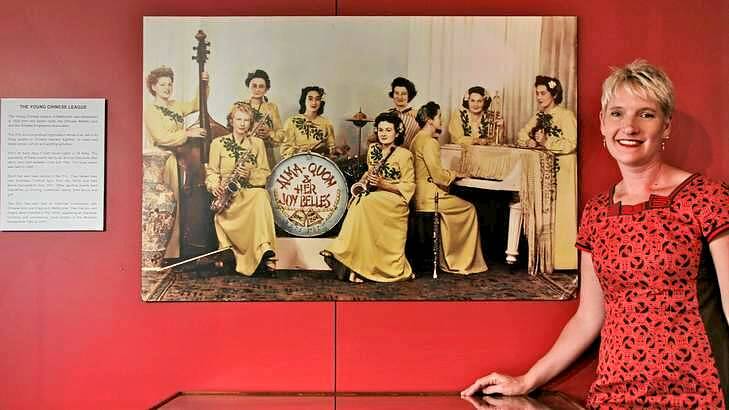
With her English-German genes, it is not surprising Sophie Couchman does not look at all Chinese. But she likes to bamboozle people by saying she could be.
Subscribe now for unlimited access.
or signup to continue reading
Couchman, the curator of Melbourne's Chinese Museum, explains that Chinese have been in Australia since the 1850s, ''so there is no reason I could not look the way I do and still have Chinese ancestry''. The ''Chinese look'' has become something of a specialty for Couchman, who did a PhD on the subject.
''I became interested in why it was that an Asian face is never seen as an Australian face,'' she says. ''I still don't know if I have an answer. I think it goes back to the gold rushes and it has just been reinforced through time. I think we want Chinese to be different and exotic, we like the robes and the dragons, the unusual customs.''
Couchman has just returned from a six-month Hamer scholarship to China, where she brushed up on her Mandarin. As the Chinese New Year begins - taking us from ''snake'' to ''horse'' - Couchman called for multiculturalism to be viewed more broadly. ''It's not about fossilising a culture, it is being free to keep elements of the culture that you want. That will be different for different people. And it not just about Chinese people coming here and adopting the mainstream - it is also about the mainstream taking on Chinese culture. We have Chinese restaurants in every country town. We take Asian food for granted here and it is only when you go to Europe that you discover that this is different.''
The Chinese Museum is housed in a building off Little Bourke Street that once was used to store props and costumes for Her Majesty's Theatre nearby. The exhibits tell of a long and sometimes unhappy involvement by Chinese in Australia. In 1896, for example, the Victorian government introduced the Factories and Shops Act because Chinese furniture-makers were too successful. The act required manufacturers to identify the labour as either ''European'' or ''Chinese'', an attempt to push a ''buy Australian'' movement that had little success.
A community grudge against Chinese was reflected in the media with an article in the Australasian Sketcher of May 1880, criticising Chinese for their habit of eating with chopsticks while sipping tea: ''The Chinese diner does this with mathematical regularity, most painful and irritating to the European onlooker used to hurrying through his meals to get back to work.'' A cartoon in another publication showed a Chinese in a cake shop pointing to the shopkeeper's cat: ''How much to cook the cat? Me eatem. Very good.''
The White Australia Policy, which denied the vote and naturalisation to Asians, saw the Chinese population in Australia fall from 40,000 in 1858 to 9000 by 1940. Now, there are 700,000 Australians with Chinese ancestry.
Couchman, who first worked at the museum as a volunteer 20 years ago, said Melbourne's Chinatown was one of the oldest in the world outside Asia. ''Some Chinese societies that were formed in the 1850s are still here,'' she said. ''Chinese were embedded in the Australian culture. There was even a Young Chinese Football League.''














